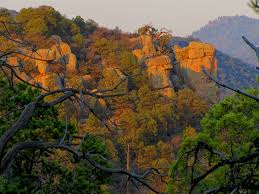 Going on a nature hike or a camping trip through a state or national forest can bring you a lot of wonderful experiences to have. It enables you to view wildlife outside of a zoo, bird watch to see what types of birds are out there, and so much more. However, when venturing out into the wilderness it is important that you remember to take nothing but photos and leave nothing but footprints behind when you leave.
Going on a nature hike or a camping trip through a state or national forest can bring you a lot of wonderful experiences to have. It enables you to view wildlife outside of a zoo, bird watch to see what types of birds are out there, and so much more. However, when venturing out into the wilderness it is important that you remember to take nothing but photos and leave nothing but footprints behind when you leave.
Taking Photos
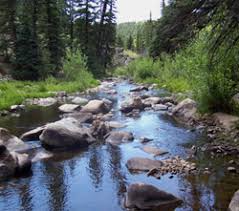 In most areas, a national forest is a protected piece of land. Every part of them, from the biggest animals to the smallest pebbles, are placed there, where nature intended them to be. Therefore, removing anything from the forest is often considered illegal; even if it is something as tiny as a pebble or a chunk of firewood to remember your trip with. This is because they should be preserved for the animals that call it home and the people who may venture into that spot after you have left. The two exceptions are your photographs and your trash. Those are the memories that you can hold onto. They are 100% legal to take away with you when you leave the National Forests, no matter what area of the world you are camping and hiking through.
In most areas, a national forest is a protected piece of land. Every part of them, from the biggest animals to the smallest pebbles, are placed there, where nature intended them to be. Therefore, removing anything from the forest is often considered illegal; even if it is something as tiny as a pebble or a chunk of firewood to remember your trip with. This is because they should be preserved for the animals that call it home and the people who may venture into that spot after you have left. The two exceptions are your photographs and your trash. Those are the memories that you can hold onto. They are 100% legal to take away with you when you leave the National Forests, no matter what area of the world you are camping and hiking through.
Alternative Memory Keepsakes
 If you still feel that you need to take something home with you from the forest, you have options. Most national forest areas are tourist destinations and people venture out to them from all areas of the world, just to see what they can discover for themselves. Therefore, there are often gift shops located near the forest and they have things available that make wonderful keepsakes of your trip. For instance, you could purchase a tee-shirt that shows you hiked the trails at this national forest or a coffee mug that says you survived hiking through. If the trails are located near a mountain or something, you can even buy polished rocks that have come from that area of the park.
If you still feel that you need to take something home with you from the forest, you have options. Most national forest areas are tourist destinations and people venture out to them from all areas of the world, just to see what they can discover for themselves. Therefore, there are often gift shops located near the forest and they have things available that make wonderful keepsakes of your trip. For instance, you could purchase a tee-shirt that shows you hiked the trails at this national forest or a coffee mug that says you survived hiking through. If the trails are located near a mountain or something, you can even buy polished rocks that have come from that area of the park.
Leave Nothing but Your Footprints
Anytime you wrap up a camping trip, whether it is on a beach, near a lake, or deep in the National Forest, it is important that you take everything with you when you leave. This is the only way to ensure that your trash doesn’t get scattered around and take away the beauty of the area, but it is more than that as well. If you remove your trash, you are protecting the forest animals or other wildlife that live in that area, so that other people can enjoy watching them. If you take away your empty food wrappers, there is no chance of a bear getting plastic for dinner. If you remove all your broken chairs or tents, you do not have to worry that a deer will get tangled up in it and lose their lives trying to get out. Above all of that though, you ensure that it is as perfect as it was when you found that beautiful spot to take photos of.
 Isn’t the idea of leaving “reality” behind something that appeals to you? For most of us, the idea of an escape is something that we strive for. Whether it is trying to escape the stress of a sick loved one or our job, it is usually a nice idea to venture out to a remote area and just relax. One thing you may not expect is that an escape is closer to you than you may think. You do not have to venture outside of the U.S. to find it. You simply need to visit the spectacular and remote area of New Mexico.
Isn’t the idea of leaving “reality” behind something that appeals to you? For most of us, the idea of an escape is something that we strive for. Whether it is trying to escape the stress of a sick loved one or our job, it is usually a nice idea to venture out to a remote area and just relax. One thing you may not expect is that an escape is closer to you than you may think. You do not have to venture outside of the U.S. to find it. You simply need to visit the spectacular and remote area of New Mexico.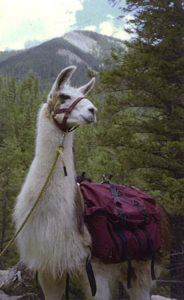 If you prefer to stick closer to a small town, you can choose to visit areas of NM that show off history at its best. There are places you can go to ride bikes through nature and see iconic churches or cathedrals. There are also state parks that are worthy of exploration and many of them are perfect for those who are in love with nature. You can visit the beaches or hidden bodies of water or a desert without venturing too far away from your start point. Not many areas can offer you so much adventure and it is all waiting for you.
If you prefer to stick closer to a small town, you can choose to visit areas of NM that show off history at its best. There are places you can go to ride bikes through nature and see iconic churches or cathedrals. There are also state parks that are worthy of exploration and many of them are perfect for those who are in love with nature. You can visit the beaches or hidden bodies of water or a desert without venturing too far away from your start point. Not many areas can offer you so much adventure and it is all waiting for you.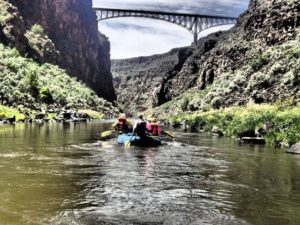 Whether you want to explore the heritage of the area, go hiking, watch hot air balloons fill the sky, or simply relax near a body of water, you should not wait to start planning your trip. There are hot springs for you to take a dip in and an ocean of fun for you to have. You can go river rafting or horseback riding or simply take a trip down one of the many scenic drives that are located in this area of the world. No matter where you want to go or what you want to do while you are there, you can plan ahead to find good deals on rooms and cabins. If you do not want to confine yourself to one area, there are many campsites around New Mexico that allow you to backpack in and backpack out for your next adventure. What are you waiting for? Nice temperatures and fun await in what is perhaps one of the most magical areas of the United States.
Whether you want to explore the heritage of the area, go hiking, watch hot air balloons fill the sky, or simply relax near a body of water, you should not wait to start planning your trip. There are hot springs for you to take a dip in and an ocean of fun for you to have. You can go river rafting or horseback riding or simply take a trip down one of the many scenic drives that are located in this area of the world. No matter where you want to go or what you want to do while you are there, you can plan ahead to find good deals on rooms and cabins. If you do not want to confine yourself to one area, there are many campsites around New Mexico that allow you to backpack in and backpack out for your next adventure. What are you waiting for? Nice temperatures and fun await in what is perhaps one of the most magical areas of the United States.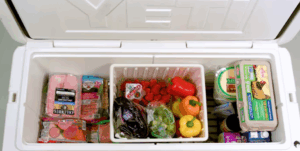 Start with the basics: shelter, sleep, and clothing. A sturdy, lightweight tent suitable for variable weather is essential, along with a ground tarp or footprint for protection against moisture. Pack a sleeping bag rated for the expected nighttime temperatures and an insulated sleeping pad for comfort and warmth. Clothing should follow the layering principle—moisture-wicking base layers, insulating mid-layers such as fleece, and a waterproof outer shell. Even in Nevada’s desert wilderness, temperatures can drop sharply at night, so pack a beanie and gloves. Sturdy hiking boots, extra socks, and breathable trail clothes will make long treks more comfortable. Don’t forget a hat and sunscreen to protect against the intense desert sun.
Start with the basics: shelter, sleep, and clothing. A sturdy, lightweight tent suitable for variable weather is essential, along with a ground tarp or footprint for protection against moisture. Pack a sleeping bag rated for the expected nighttime temperatures and an insulated sleeping pad for comfort and warmth. Clothing should follow the layering principle—moisture-wicking base layers, insulating mid-layers such as fleece, and a waterproof outer shell. Even in Nevada’s desert wilderness, temperatures can drop sharply at night, so pack a beanie and gloves. Sturdy hiking boots, extra socks, and breathable trail clothes will make long treks more comfortable. Don’t forget a hat and sunscreen to protect against the intense desert sun. Navigation and safety tools are equally critical. Carry a detailed topographic map, compass, and GPS device or app with offline maps, since cell service is limited in much of the Gila Wilderness. A first aid kit, whistle, multitool, and headlamp with spare batteries should be easy to reach in your pack. It’s also wise to bring a small repair kit for tents and gear, as well as a fire-starting kit including waterproof matches or a lighter. Water is one of the most important considerations—bring enough to sustain your group for the duration, or pack a reliable water filter or purification tablets if you’ll be refilling from natural sources.
Navigation and safety tools are equally critical. Carry a detailed topographic map, compass, and GPS device or app with offline maps, since cell service is limited in much of the Gila Wilderness. A first aid kit, whistle, multitool, and headlamp with spare batteries should be easy to reach in your pack. It’s also wise to bring a small repair kit for tents and gear, as well as a fire-starting kit including waterproof matches or a lighter. Water is one of the most important considerations—bring enough to sustain your group for the duration, or pack a reliable water filter or purification tablets if you’ll be refilling from natural sources. In contrast, a high-end cooler, such as those made by brands like Yeti or Pelican, offers superior insulation and ice retention for extended trips or hotter conditions. These coolers can keep ice frozen for several days, making them ideal for more remote adventures where resupplying isn’t possible. They also tend to be more durable, with heavy-duty latches and bear-resistant construction—an advantage in rugged terrain. The downside, of course, is the higher price and heavier build, but for those who camp often or spend long stretches off-grid, the investment pays off in reliability and performance.
In contrast, a high-end cooler, such as those made by brands like Yeti or Pelican, offers superior insulation and ice retention for extended trips or hotter conditions. These coolers can keep ice frozen for several days, making them ideal for more remote adventures where resupplying isn’t possible. They also tend to be more durable, with heavy-duty latches and bear-resistant construction—an advantage in rugged terrain. The downside, of course, is the higher price and heavier build, but for those who camp often or spend long stretches off-grid, the investment pays off in reliability and performance.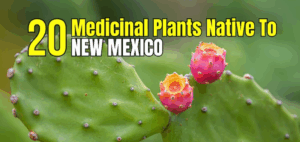 Begin by selecting plants that are either native to the Gila Wilderness or highly adapted to its conditions. Native plants such as prickly pear cactus (Opuntia spp.), agave (Agave parryi or Agave americana), wild onions (Allium spp.), mesquite (Prosopis glandulosa), and yucca are all excellent choices. These species have evolved to thrive in the high-desert conditions of the Gila region and can provide both food and habitat for wildlife. For example, prickly pear offers edible pads and fruits, agave can be used for syrup or fiber, and mesquite pods are a traditional source of flour. Aloe vera, though not native, can survive in similar conditions and offers substantial medicinal value. However, it should be planted carefully, in a contained or managed space, so it does not displace native flora.
Begin by selecting plants that are either native to the Gila Wilderness or highly adapted to its conditions. Native plants such as prickly pear cactus (Opuntia spp.), agave (Agave parryi or Agave americana), wild onions (Allium spp.), mesquite (Prosopis glandulosa), and yucca are all excellent choices. These species have evolved to thrive in the high-desert conditions of the Gila region and can provide both food and habitat for wildlife. For example, prickly pear offers edible pads and fruits, agave can be used for syrup or fiber, and mesquite pods are a traditional source of flour. Aloe vera, though not native, can survive in similar conditions and offers substantial medicinal value. However, it should be planted carefully, in a contained or managed space, so it does not displace native flora. Site selection and preparation are crucial for success. Choose a location that matches the sunlight and drainage preferences of your selected species. In the Gila region, many beneficial plants prefer full sun and well-drained soils. Avoid heavy disturbance of the soil; instead, consider sheet mulching or simply clearing invasive weeds while preserving native groundcover. Adding a layer of organic mulch, such as shredded bark or leaf litter, will help conserve moisture, suppress weeds, and slowly enrich the soil. If planting near slopes or arroyos, use natural contours to direct water toward the roots of your plants. Swales or rock-lined basins can be built to capture and slow rainwater during monsoon season.
Site selection and preparation are crucial for success. Choose a location that matches the sunlight and drainage preferences of your selected species. In the Gila region, many beneficial plants prefer full sun and well-drained soils. Avoid heavy disturbance of the soil; instead, consider sheet mulching or simply clearing invasive weeds while preserving native groundcover. Adding a layer of organic mulch, such as shredded bark or leaf litter, will help conserve moisture, suppress weeds, and slowly enrich the soil. If planting near slopes or arroyos, use natural contours to direct water toward the roots of your plants. Swales or rock-lined basins can be built to capture and slow rainwater during monsoon season.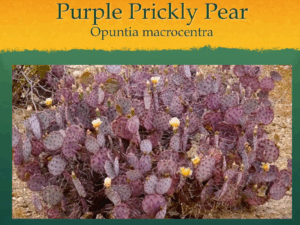 Plant in clusters or guilds that mimic natural ecosystems. For example, a xeric guild might include aloe vera as a medicinal ground-level plant, prickly pear as a mid-height food plant, and mesquite to provide partial canopy, nitrogen fixation, and mulch. Grouping plants with similar water and soil needs reduces competition and maintenance. During the first year, deep watering every couple of weeks will help establish roots. Afterward, most native species can survive on rainfall alone.
Plant in clusters or guilds that mimic natural ecosystems. For example, a xeric guild might include aloe vera as a medicinal ground-level plant, prickly pear as a mid-height food plant, and mesquite to provide partial canopy, nitrogen fixation, and mulch. Grouping plants with similar water and soil needs reduces competition and maintenance. During the first year, deep watering every couple of weeks will help establish roots. Afterward, most native species can survive on rainfall alone.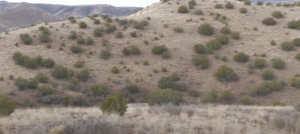 The American Southwest is a hunter’s paradise, offering a dramatic blend of rugged mountains, high desert plateaus, dense pine forests, and red rock canyons—all teeming with a diverse range of big game and specialty hunting opportunities. New Mexico and Arizona, in particular, stand out as premier destinations for those seeking once-in-a-lifetime hunts and unique wildlife encounters. Both states are renowned for their well-managed wildlife populations and draw-based tag systems that prioritize conservation and quality hunting experiences. In New Mexico, one of the crown jewels of the hunting world is the Rocky Mountain elk hunt. With bulls that often exceed 350 inches, New Mexico is home to some of the biggest elk in North America, especially in units like the Gila National Forest. Hunters flock to the state each year in hopes of drawing a coveted tag, knowing that a successful hunt here often results in massive antlers and unforgettable memories. Beyond elk, New Mexico also offers excellent mule deer, pronghorn antelope, and even oryx and Barbary sheep hunts, thanks to introduced species thriving on White Sands Missile Range and other arid military-managed lands. These hunts are not only challenging due to the terrain and stealth required but are also incredibly unique in terms of the animals pursued.
The American Southwest is a hunter’s paradise, offering a dramatic blend of rugged mountains, high desert plateaus, dense pine forests, and red rock canyons—all teeming with a diverse range of big game and specialty hunting opportunities. New Mexico and Arizona, in particular, stand out as premier destinations for those seeking once-in-a-lifetime hunts and unique wildlife encounters. Both states are renowned for their well-managed wildlife populations and draw-based tag systems that prioritize conservation and quality hunting experiences. In New Mexico, one of the crown jewels of the hunting world is the Rocky Mountain elk hunt. With bulls that often exceed 350 inches, New Mexico is home to some of the biggest elk in North America, especially in units like the Gila National Forest. Hunters flock to the state each year in hopes of drawing a coveted tag, knowing that a successful hunt here often results in massive antlers and unforgettable memories. Beyond elk, New Mexico also offers excellent mule deer, pronghorn antelope, and even oryx and Barbary sheep hunts, thanks to introduced species thriving on White Sands Missile Range and other arid military-managed lands. These hunts are not only challenging due to the terrain and stealth required but are also incredibly unique in terms of the animals pursued. Arizona, on the other hand, has built a name for itself with its exceptional trophy-quality species and specialty hunts. The state is perhaps best known for its world-class Coues deer and mule deer, with many hunters traveling from across the country to take on the challenge of spotting and stalking these elusive animals in the steep, cactus-studded terrain of southern Arizona. The Coues deer, often referred to as the “gray ghost,” is especially prized for its elusive nature and the sharp eyes required to spot it. In the northern part of the state, elk reign supreme, with units around Flagstaff and the Mogollon Rim producing record-class bulls that rival even New Mexico’s. What adds to Arizona’s allure is the opportunity for bighorn sheep hunts—both desert and Rocky Mountain subspecies—which are among the most difficult tags to draw but also among the most sought-after in North America.
Arizona, on the other hand, has built a name for itself with its exceptional trophy-quality species and specialty hunts. The state is perhaps best known for its world-class Coues deer and mule deer, with many hunters traveling from across the country to take on the challenge of spotting and stalking these elusive animals in the steep, cactus-studded terrain of southern Arizona. The Coues deer, often referred to as the “gray ghost,” is especially prized for its elusive nature and the sharp eyes required to spot it. In the northern part of the state, elk reign supreme, with units around Flagstaff and the Mogollon Rim producing record-class bulls that rival even New Mexico’s. What adds to Arizona’s allure is the opportunity for bighorn sheep hunts—both desert and Rocky Mountain subspecies—which are among the most difficult tags to draw but also among the most sought-after in North America. One specialty hunt that deserves particular attention to
One specialty hunt that deserves particular attention to  In addition to the
In addition to the  Another popular nutrition plan is the Paleo diet, which focuses on whole, unprocessed foods similar to what our ancient ancestors might have eaten. This diet includes lean meats, fish, fruits, vegetables, nuts, and seeds, while excluding grains, legumes, and dairy. The Paleo diet provides high-quality protein and healthy fats, which are essential for muscle repair and sustained energy during long hikes. The emphasis on whole foods and healthy fats helps hikers avoid the fatigue that can result from refined sugars or processed snacks. Additionally, the Paleo diet is rich in micronutrients, such as potassium and magnesium, which can help prevent cramps and muscle fatigue during high-altitude hikes.
Another popular nutrition plan is the Paleo diet, which focuses on whole, unprocessed foods similar to what our ancient ancestors might have eaten. This diet includes lean meats, fish, fruits, vegetables, nuts, and seeds, while excluding grains, legumes, and dairy. The Paleo diet provides high-quality protein and healthy fats, which are essential for muscle repair and sustained energy during long hikes. The emphasis on whole foods and healthy fats helps hikers avoid the fatigue that can result from refined sugars or processed snacks. Additionally, the Paleo diet is rich in micronutrients, such as potassium and magnesium, which can help prevent cramps and muscle fatigue during high-altitude hikes. Finally, the Ketogenic diet has gained popularity for its focus on high fat and very low carbohydrate intake. While the keto diet may not be for everyone, it has proven beneficial for some hikers, particularly those undertaking long hikes where fat stores are needed as a primary source of energy. The keto diet can help improve endurance by training the body to burn fat instead of carbohydrates, making it a potentially effective strategy for sustained energy during high-altitude hikes.
Finally, the Ketogenic diet has gained popularity for its focus on high fat and very low carbohydrate intake. While the keto diet may not be for everyone, it has proven beneficial for some hikers, particularly those undertaking long hikes where fat stores are needed as a primary source of energy. The keto diet can help improve endurance by training the body to burn fat instead of carbohydrates, making it a potentially effective strategy for sustained energy during high-altitude hikes.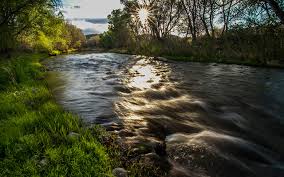 The Gila River is a massive 649-mile-long river that is also a part of the Colorado River. It flows through Arizona and New Mexico. Along this river, you will find some outstanding views of the area that it flows through. Therefore, it is very popular among many locals and tourists who love to go floating in the Gila River.
The Gila River is a massive 649-mile-long river that is also a part of the Colorado River. It flows through Arizona and New Mexico. Along this river, you will find some outstanding views of the area that it flows through. Therefore, it is very popular among many locals and tourists who love to go floating in the Gila River. As a tributary of the Colorado River and then having two other tributaries that lead south of the border, into Mexico, this river offers a lot of amazing views and experiences. There is only one major dam, the Coolidge Dam, but there are several smaller diversion dams. It also links to the Salt River, where you can find the Theodore Roosevelt Dam. Because of its extensive length and the fact that it is through some of the United States most beautiful areas, the river is used as a recreational area for many outdoor lovers.
As a tributary of the Colorado River and then having two other tributaries that lead south of the border, into Mexico, this river offers a lot of amazing views and experiences. There is only one major dam, the Coolidge Dam, but there are several smaller diversion dams. It also links to the Salt River, where you can find the Theodore Roosevelt Dam. Because of its extensive length and the fact that it is through some of the United States most beautiful areas, the river is used as a recreational area for many outdoor lovers. This river is navigable during the spring thaw and remains that way through the summer and autumn storms. While floating down it, you will be able to float through lazy canyons and also find some whitewater areas. It is located in the desert, so you will have a chance of an erratic flow area or flash flooding in some areas. You should check the river to make sure that it is usable for what you want to enjoy before you venture out. If it is rapids that you are seeking, you may also want to visit the Salt River tributary where there are some Class IV rapids. If you simply want to relax and watch the world as you float down the Gila, you will enjoy taking along specific gear for it. The raft, canoe, or inflatable kayak are all a given for white watering, but you may also want to take along smaller floats for the lazier parts of the river. When white watering, you will need helmets and other things to ensure that you are safe.
This river is navigable during the spring thaw and remains that way through the summer and autumn storms. While floating down it, you will be able to float through lazy canyons and also find some whitewater areas. It is located in the desert, so you will have a chance of an erratic flow area or flash flooding in some areas. You should check the river to make sure that it is usable for what you want to enjoy before you venture out. If it is rapids that you are seeking, you may also want to visit the Salt River tributary where there are some Class IV rapids. If you simply want to relax and watch the world as you float down the Gila, you will enjoy taking along specific gear for it. The raft, canoe, or inflatable kayak are all a given for white watering, but you may also want to take along smaller floats for the lazier parts of the river. When white watering, you will need helmets and other things to ensure that you are safe. There is something special about taking a walk in the great outdoors and enjoying all that a state park or a national park has to offer. It is here that you will be able to see untouched trees, abundant wildlife, and scenery that is always beautiful. However, part of planning a trip to one of the many national and state parks should include items that will keep pests at bay. This is why we suggest that you educate yourself on proper pest prevention planning for time outdoors.
There is something special about taking a walk in the great outdoors and enjoying all that a state park or a national park has to offer. It is here that you will be able to see untouched trees, abundant wildlife, and scenery that is always beautiful. However, part of planning a trip to one of the many national and state parks should include items that will keep pests at bay. This is why we suggest that you educate yourself on proper pest prevention planning for time outdoors.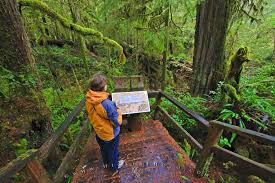 Everyone knows that insects, such as mosquitoes, can carry diseases. This complicates everything during hikes since you must share a space with the insects who want to feed off you and all the wild animals that may be hiding out in the wilderness. State and National Parks are often huge areas of untouched land. This means that there is an abundance of dead leaves, moist areas, and still water. To ensure that they remain “untouched” very little can be done to slow pests from using it as a breeding ground. Therefore, it is up to the people who want to enjoy nature to take care of their own pest control. For many people, this is a problem that is easily dealt with, but some people have to take further steps to ensure they walk out of the wilderness without a mosquito borne illness.
Everyone knows that insects, such as mosquitoes, can carry diseases. This complicates everything during hikes since you must share a space with the insects who want to feed off you and all the wild animals that may be hiding out in the wilderness. State and National Parks are often huge areas of untouched land. This means that there is an abundance of dead leaves, moist areas, and still water. To ensure that they remain “untouched” very little can be done to slow pests from using it as a breeding ground. Therefore, it is up to the people who want to enjoy nature to take care of their own pest control. For many people, this is a problem that is easily dealt with, but some people have to take further steps to ensure they walk out of the wilderness without a mosquito borne illness. Mosquitoes are drawn to you. They know that you have blood in your body and they enjoy eating as much as everyone else. Most people who enjoy hiking on the trails recommend that you carry with a spray can of insect repellent, especially if you are going into an area that has experienced a fair amount of rainfall. It depends on your preferences though, since a lot of people do not want to wear DEET insect spray. Instead, they may opt for insect repelling clothing and natural pest control scents such as citronella. If you want, you can carry both types and then only use the one that is required at that time to keep bugs away. As someone who wants to camp in the great outdoors, in some of the remotest locations, you may also want to take along a backpack fogger. It is a different kind of backpack but can help you clear your area of insects without causing a major change within the environment. There are many people who love nature but wouldn’t leave home without it since it can keep mosquitoes away from your tent for several hours.
Mosquitoes are drawn to you. They know that you have blood in your body and they enjoy eating as much as everyone else. Most people who enjoy hiking on the trails recommend that you carry with a spray can of insect repellent, especially if you are going into an area that has experienced a fair amount of rainfall. It depends on your preferences though, since a lot of people do not want to wear DEET insect spray. Instead, they may opt for insect repelling clothing and natural pest control scents such as citronella. If you want, you can carry both types and then only use the one that is required at that time to keep bugs away. As someone who wants to camp in the great outdoors, in some of the remotest locations, you may also want to take along a backpack fogger. It is a different kind of backpack but can help you clear your area of insects without causing a major change within the environment. There are many people who love nature but wouldn’t leave home without it since it can keep mosquitoes away from your tent for several hours.